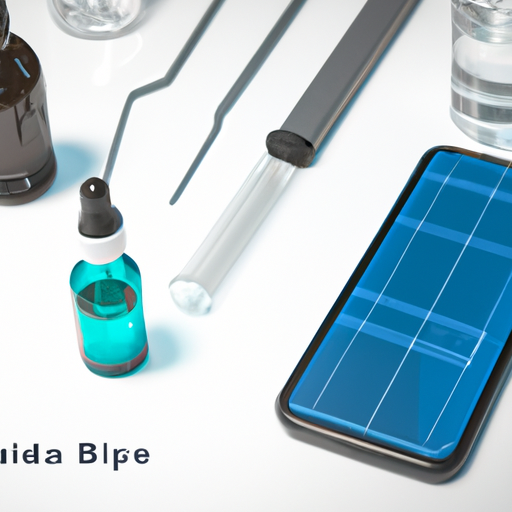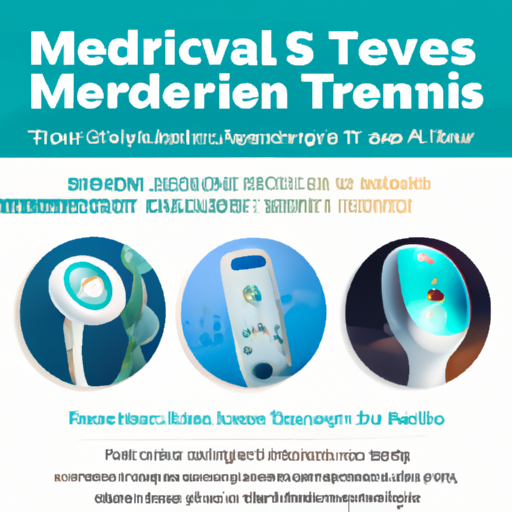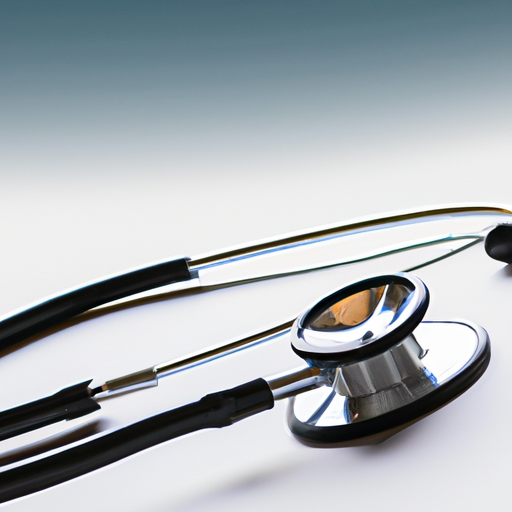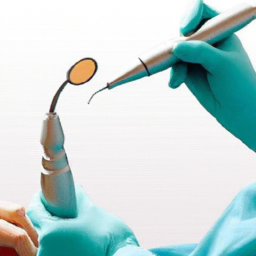Medical Devices Industry Trends
You’re curious about the latest trends in the medical devices industry, aren’t you? Well, buckle up because we’re about to give you a whirlwind tour of what’s happening in this rapidly evolving field. From breakthrough technologies to innovative designs, the medical devices industry is at the forefront of improving healthcare outcomes and patient experiences. So, get ready to explore the cutting-edge advancements and game-changing developments that are shaping the future of medical devices.

Table of Contents
1. Increasing Adoption of Digital Healthcare Solutions
The medical devices industry has been experiencing a revolution with the increasing adoption of digital healthcare solutions. These solutions leverage the power of technology to improve patient care and outcomes. One major trend contributing to this growth is the use of remote monitoring devices. These devices allow healthcare professionals to remotely monitor patients’ vital signs and health conditions, enabling early detection of any potential issues and timely intervention. This not only improves patient outcomes but also reduces the need for frequent hospital visits, leading to cost savings for both patients and healthcare providers.
Another significant digital healthcare solution is telehealth and telemedicine. With advancements in communication technology, patients can now receive medical consultations from the comfort of their own homes. Telehealth and telemedicine solutions enable patients to connect with healthcare professionals through video consultations, phone calls, or secure messaging platforms. This not only saves time and travel costs but also increases access to healthcare, particularly for individuals living in remote areas. It also allows healthcare providers to offer timely guidance and advice, reducing the burden on hospitals and emergency departments.
Wearable technology is also playing a crucial role in the adoption of digital healthcare solutions. These devices, such as smartwatches and fitness trackers, can monitor various health parameters, including heart rate, sleep quality, and physical activity levels. They provide individuals with real-time data about their health and wellness, empowering them to make informed decisions about their lifestyle and seek medical attention if needed. Additionally, wearable devices can be integrated with other healthcare platforms, allowing healthcare professionals to track and analyze patients’ progress remotely.
2. Artificial Intelligence (AI) in Medical Devices
Artificial intelligence (AI) is revolutionizing the medical devices industry by enhancing diagnostic capabilities and improving patient care. AI-assisted diagnostics is one area where this technology is making a significant impact. AI algorithms can analyze vast amounts of medical data, including patient history, lab results, and imaging scans, to assist healthcare professionals in diagnosing various diseases and conditions accurately. This can lead to earlier detection, improved treatment planning, and better patient outcomes.
Smart implants and prosthetics are another exciting application of AI in the medical devices industry. These devices are designed to enhance the functionality of individuals with disabilities or medical conditions. By incorporating AI, these implants and prosthetics can adapt and learn from the individual’s movements and preferences, providing a more personalized user experience. This technology has the potential to greatly improve the quality of life for individuals with limb loss or mobility impairments.
Robotic surgery is also benefiting from advancements in AI. Surgical robots equipped with AI algorithms can assist surgeons by enhancing precision and dexterity during complex procedures. These robots can perform delicate movements with greater accuracy, reducing the risk of human error. Robotic surgery offers several advantages, including smaller incisions, faster recovery times, and reduced post-operative complications. As AI continues to evolve, the capabilities of surgical robots are expected to expand, leading to further improvements in patient outcomes.

3. Internet of Things (IoT) Integration
The Internet of Things (IoT) has transformed various industries, and healthcare is no exception. In the medical devices industry, IoT integration is bringing about significant improvements in patient safety, monitoring, and healthcare operations. Connected medical devices, enabled by IoT technology, can communicate with each other and with healthcare professionals in real-time. This allows for seamless data collection and analysis, enabling timely interventions and better decision-making.
Improved patient safety and monitoring is a key benefit of IoT integration. Connected medical devices can continuously monitor patients’ vital signs and send alerts to healthcare professionals if any abnormalities are detected. This enables early intervention and reduces the risk of adverse events. Additionally, IoT-enabled wearable devices can track patients’ activities and alert caregivers or emergency services in case of a fall or medical emergency.
IoT integration also streamlines healthcare operations, leading to improved efficiency and reduced costs. Connected medical devices can automate routine tasks, such as inventory management and equipment maintenance, eliminating the need for manual intervention. This frees up healthcare professionals to focus on more critical tasks, such as patient care. Furthermore, IoT technology enables remote monitoring and telehealth services, reducing the need for in-person visits and enabling more efficient healthcare delivery.
4. Focus on Personalized Medicine
With advancements in genomics and genetic testing, the medical devices industry is increasingly shifting towards personalized medicine. This approach takes into account individuals’ genetic makeup, lifestyle factors, and medical history to tailor healthcare interventions and treatments. Several trends in the industry are contributing to the growth of personalized medicine.
Advancements in genomics and genetic testing have allowed healthcare professionals to gain a better understanding of how an individual’s genetic makeup influences their susceptibility to certain diseases and their response to specific treatments. Genetic testing can identify genetic variations and mutations that may increase the risk of developing certain conditions, enabling early intervention or preventive measures. This information can also guide the selection of appropriate medication and dosage, minimizing the risk of adverse reactions.
Customizable medical devices are another aspect of personalized medicine. These devices can be tailored to individual patients’ anatomical requirements, ensuring a better fit and improved functionality. For example, 3D printing technology is being utilized to create customized implants and prosthetics that closely match the patient’s unique anatomy. This not only enhances patient comfort but also leads to better clinical outcomes.
Precision drug dosage delivery is another area where personalized medicine is making a difference. By leveraging technology such as smart drug delivery systems, medications can be administered at precise dosages based on individual factors, such as weight, age, and genetic makeup. This ensures optimal therapeutic effects while minimizing the risk of side effects.
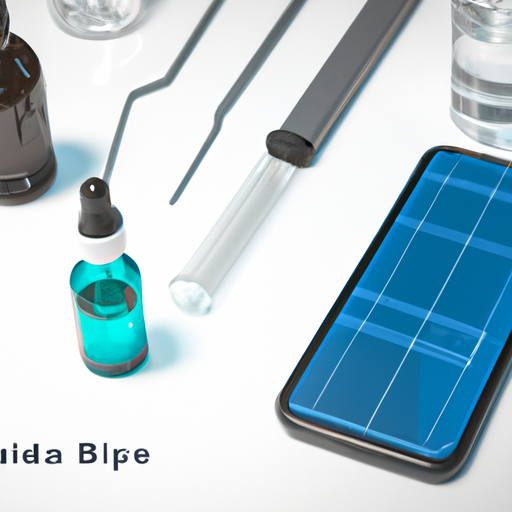
5. Increasing Use of 3D Printing Technology
The use of 3D printing technology in the medical devices industry is rapidly increasing, with several applications gaining popularity. One of the key benefits of 3D printing is the ability to create customized implants and prosthetics. Traditional manufacturing processes often require standard-sized implants or prosthetics, leading to potential discomfort and compromised functionality for patients. With 3D printing, medical devices can be designed and fabricated to precisely match an individual’s unique anatomy, resulting in a better fit and improved patient outcomes.
In addition to personalized implants and prosthetics, 3D printing technology is also being used to print living tissues and organs. This field, known as bioprinting, holds the promise of revolutionizing organ transplantation by addressing the shortage of donor organs. By using bioinks composed of living cells, scientists can create three-dimensional structures that mimic the natural physiology of various tissues and organs. While currently under development and research, bioprinting has the potential to offer life-saving solutions for patients in need of organ transplants.
Rapid prototyping of medical devices is another application of 3D printing technology that is gaining traction in the industry. With traditional manufacturing processes, creating prototypes can be time-consuming and costly. 3D printing allows for quick and cost-effective production of prototypes, enabling medical device companies to iterate and refine their designs rapidly. This accelerates the development cycle, leading to faster product launches and improved innovation in the field.
6. Growing Demand for Minimally Invasive Procedures
Minimally invasive procedures have gained popularity in recent years due to their numerous benefits for patients, including reduced pain, faster recovery times, and smaller incisions. The medical devices industry is responding to this growing demand with advancements in endoscopic devices, robotics in laparoscopic surgery, and catheter-based interventions.
Endoscopic devices, such as flexible endoscopes, allow healthcare professionals to visualize and operate inside the body through small incisions or natural orifices. These devices have revolutionized diagnostics and treatments by providing a less invasive alternative to traditional open surgery. With improved imaging capabilities and miniaturized instruments, endoscopic procedures have become safer and more effective, resulting in better patient outcomes.
Robotics in laparoscopic surgery is another area witnessing significant advancements. Laparoscopic procedures involve making small incisions and inserting a camera and specialized surgical instruments to perform surgeries. The integration of robotics enhances the precision and dexterity of the surgeon, enabling more complex procedures to be performed with minimal invasiveness. Robotic-assisted laparoscopic surgeries offer benefits such as reduced blood loss, shorter hospital stays, and faster recovery times.
Catheter-based interventions are minimally invasive procedures performed using catheters, which are thin, flexible tubes. These interventions are commonly used for cardiovascular conditions, such as angioplasty and stenting. Catheter-based procedures offer advantages such as reduced risk of infection, shorter recovery times, and decreased trauma to surrounding tissues. The development of innovative catheter designs, advanced imaging technologies, and improved materials has further enhanced the capabilities of catheter-based interventions.
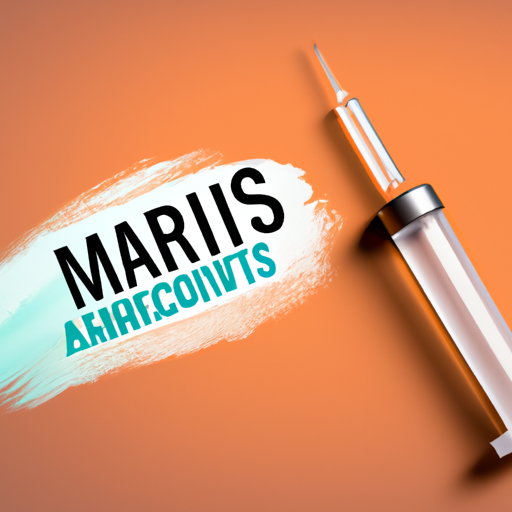
7. Advancements in Robotic-Assisted Surgery
Robotic-assisted surgery has revolutionized the field of surgery by offering enhanced precision, dexterity, and visualization. This technology combines the expertise of the surgeon with the capabilities of robotic systems, resulting in improved patient outcomes and reduced surgical errors.
One of the primary advantages of robotic-assisted surgery is enhanced precision and dexterity. Robotic systems utilize highly sensitive instruments that can perform delicate movements with greater accuracy than human hands. This allows surgeons to perform complex procedures with exceptional precision, reducing the risk of complications and improving patient safety.
In addition to precision, robotic-assisted surgery also reduces the occurrence of surgical errors. The robotic systems are equipped with advanced imaging technologies, such as high-definition cameras and 3D visualization, which provide surgeons with a more detailed view of the surgical site. This improved visualization enables surgeons to identify and navigate anatomical structures more accurately, decreasing the likelihood of mistakes during the procedure.
Improved patient outcomes are another significant benefit of robotic-assisted surgery. The minimally invasive nature of robotic procedures results in smaller incisions, reduced blood loss, and faster recovery times. Patients who undergo robotic-assisted surgeries often experience less pain and have shorter hospital stays compared to traditional open surgeries. This not only improves patient satisfaction but also reduces healthcare costs.
8. Integration of Virtual Reality (VR) and Augmented Reality (AR)
Virtual reality (VR) and augmented reality (AR) technologies are finding applications in the medical devices industry, particularly in surgical simulation and training, pain management and rehabilitation, and patient education and engagement.
Surgical simulation and training have traditionally relied on cadavers and animal models, which have limitations in terms of accessibility and realism. VR and AR technologies offer a more immersive and realistic training environment for surgeons. Surgeons can practice complex surgical procedures in a virtual environment, allowing them to gain valuable experience and refine their skills without risking patient safety. Additionally, VR and AR can be used for surgical planning and guidance, providing surgeons with real-time feedback and visualization during actual procedures.
Pain management and rehabilitation are areas where VR and AR can significantly improve patient outcomes. VR can be used as a distraction technique to alleviate pain and anxiety during medical procedures or chronic pain management. By immersing patients in virtual environments, VR can help distract the brain from focusing on pain signals, resulting in reduced pain perception. AR, on the other hand, can enhance the rehabilitation process by overlaying virtual objects onto the real world. This can motivate patients during physical therapy exercises and provide real-time feedback on their movements and progress.
Patient education and engagement can be enhanced through the integration of VR and AR technologies. Patients can visualize and understand complex medical concepts and procedures more easily through immersive virtual experiences. VR and AR can also be used to create interactive educational content, allowing patients to actively engage in their own healthcare journey. This empowers patients to make informed decisions about their treatment options and actively participate in their recovery process.
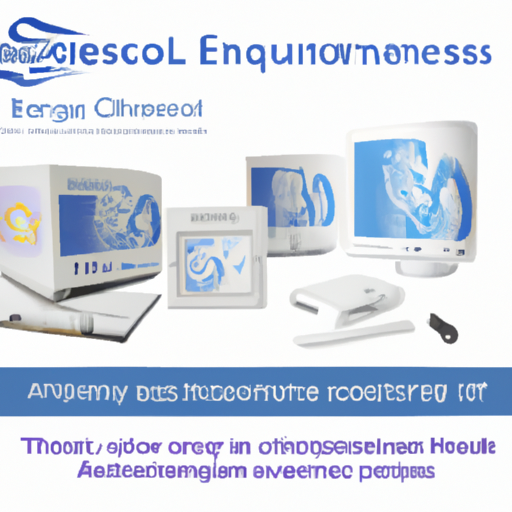
9. Rising Focus on Cybersecurity in Medical Devices
With the increasing adoption of digital healthcare solutions and the integration of IoT, ensuring cybersecurity in medical devices has become a critical concern. Medical devices, such as connected implants and wearable devices, are vulnerable to cybersecurity threats, which can have serious consequences for patient safety and the privacy of their health information.
Securing medical device networks is essential to protect against unauthorized access and potential attacks. Medical devices should have robust security features, such as authentication mechanisms, encryption, and secure communication protocols. Additionally, healthcare providers need to implement stringent network security measures, including firewalls, intrusion detection systems, and regular vulnerability assessments.
Preventing unauthorized access to patient data is another aspect of cybersecurity in medical devices. Patient health information is highly sensitive and must be protected from data breaches or unauthorized use. Encryption and access control mechanisms should be employed to safeguard patient data both at rest and during transfer. Strict data privacy policies and procedures should be in place, ensuring that only authorized personnel have access to patient information.
Ensuring data integrity is vital to maintain the accuracy and reliability of medical data. Medical devices should have mechanisms to detect and prevent tampering or unauthorized modifications of data. This includes implementing audit trails, data validation techniques, and secure storage practices. Regular data backups and disaster recovery plans should also be in place to prevent data loss and minimize downtime.
10. Growing Adoption of Point-of-Care Testing
Point-of-care testing is gaining popularity in the medical devices industry as it offers several advantages, such as fast results, improved accessibility to healthcare, and enhanced patient convenience. This testing approach involves performing diagnostic tests at or near the patient’s location, eliminating the need to send samples to a laboratory.
Portable diagnostic devices play a crucial role in point-of-care testing. These handheld devices can analyze samples, such as blood, urine, or saliva, and provide quick and accurate results. Point-of-care testing allows for immediate diagnosis and treatment decisions, particularly in emergency settings or remote areas where laboratory infrastructure may be limited. This not only improves patient outcomes but also reduces the turnaround time for test results, leading to faster treatment initiation.
Remote patient monitoring is another application of point-of-care testing. Portable devices can be used to continuously monitor patients’ vital signs and health conditions, sending real-time data to healthcare professionals for analysis. This allows for proactive intervention and timely adjustments in medication or treatment plans. Remote patient monitoring also enables patients to actively participate in the management of their own health, leading to improved self-care and better adherence to treatment regimens.
Improved accessibility to healthcare is a significant advantage of point-of-care testing. By bringing diagnostic capabilities closer to the patient, point-of-care testing eliminates the need for patients to travel to a laboratory or clinic, particularly for routine tests and follow-up monitoring. This reduces the burden on healthcare facilities and saves time and travel costs for patients. Point-of-care testing is particularly beneficial in remote or resource-limited areas where access to healthcare may be challenging.
In conclusion, the medical devices industry is rapidly evolving to meet the changing needs and expectations of healthcare professionals and patients. From digital healthcare solutions to personalized medicine, advancements in technology are transforming the industry and driving improvements in patient care, outcomes, and efficiency. As new trends continue to emerge, the future of medical devices holds great promise for revolutionizing healthcare delivery and improving the quality of life for individuals around the world.
